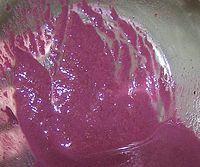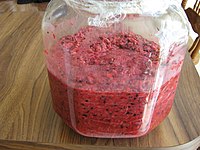A French -based wine -producing term, Battonage is a sloping of the sludge in the tank, barrel or barrel in order to enhance the complexity of the taste and aroma of the wine.
Lees are deposits of dead yeast or residual yeast and other particles that precipitate, or are carried by the action of "fining", to the bottom of a vat of wine after fermentation and aging. The same while brewing beer at a brewery is known as trub – the same from secondary fermentation of wine and beer are the lees or equally, as to beer only, dregs. This material is the source for most commercial tartaric acid, which is used in cooking and in organic chemistry.

Normally, the wine is transferred to another container (racking), leaving this sediment behind. Some wines (notably Chardonnay, Champagne, and Muscadet) are sometimes aged for a time on the lees (a process known as sur lie), leading to a distinctive yeasty aroma and taste. The lees may be stirred (French: bâtonnage) for uptake of their flavour.
The lees are an important component in the making of ripasso, where the leftover lees from Amarone are used to impart more flavour and colour to partially aged Valpolicella.[citation needed]
Fujian red wine chicken is made from rice wine lees.

 Wineries
Wineries